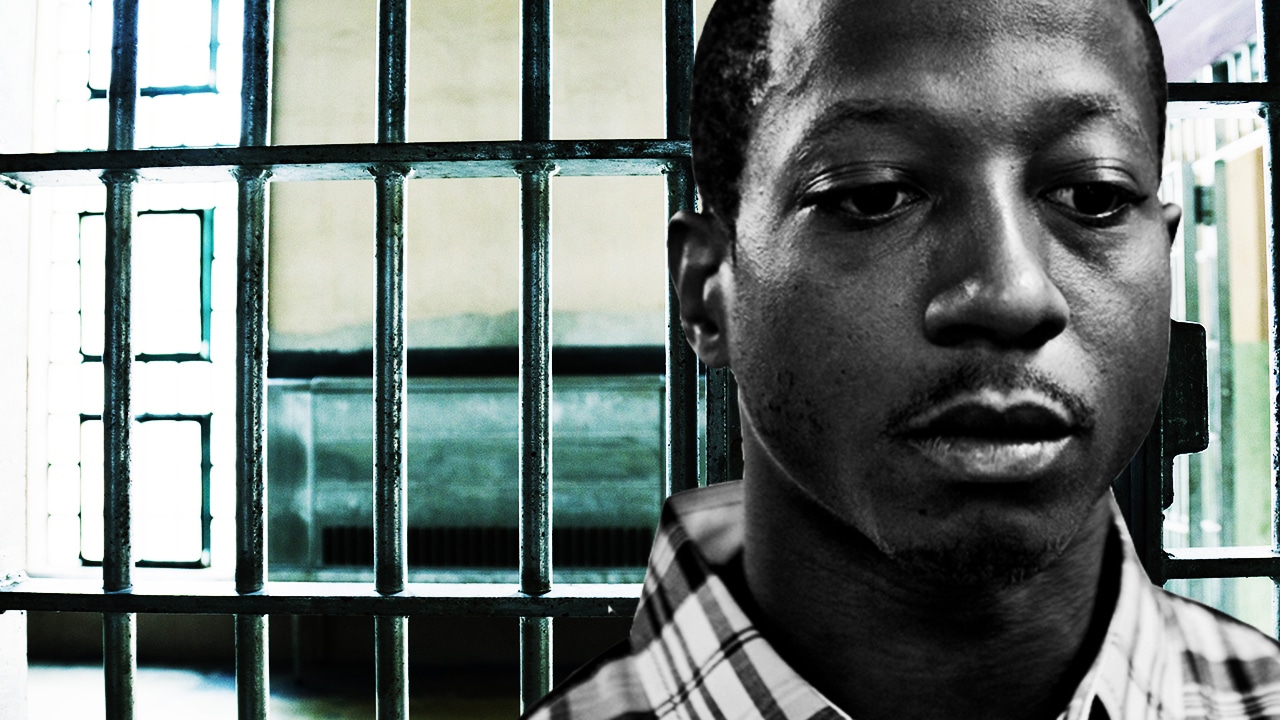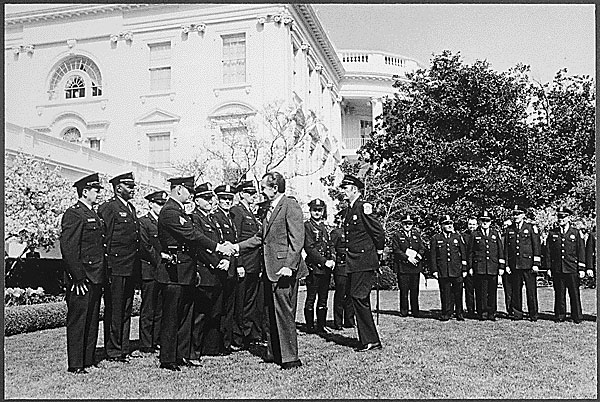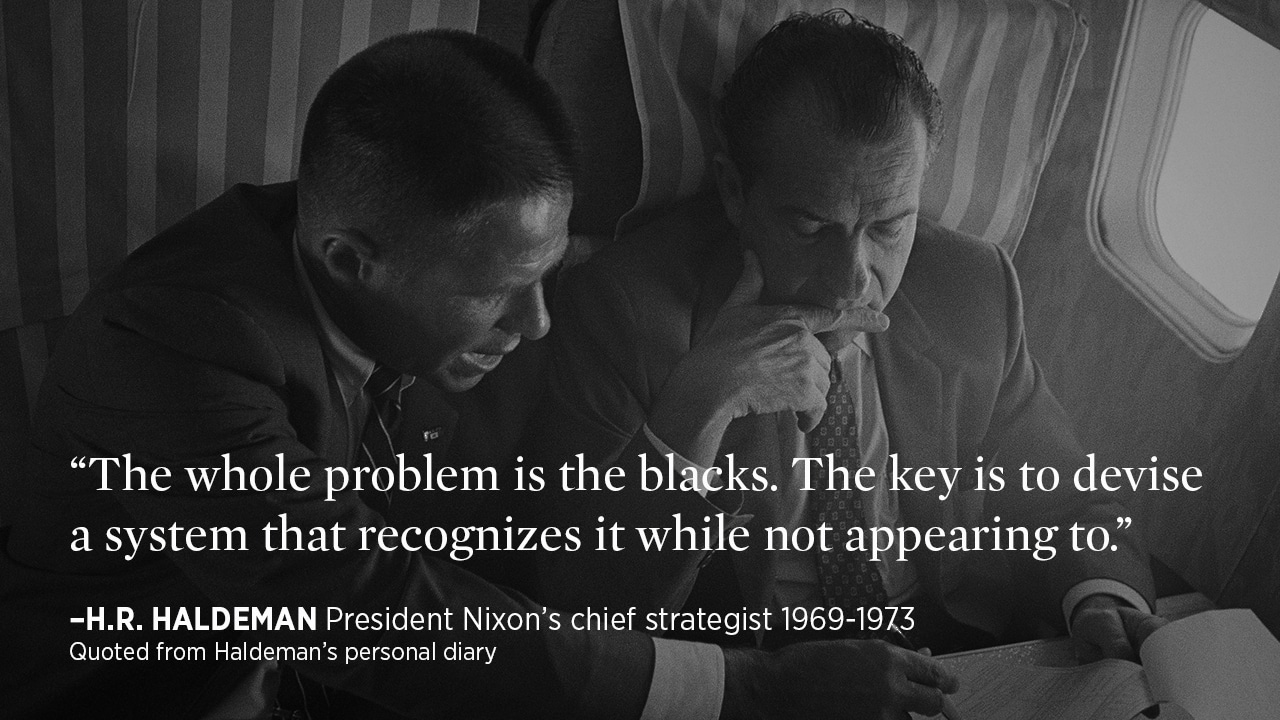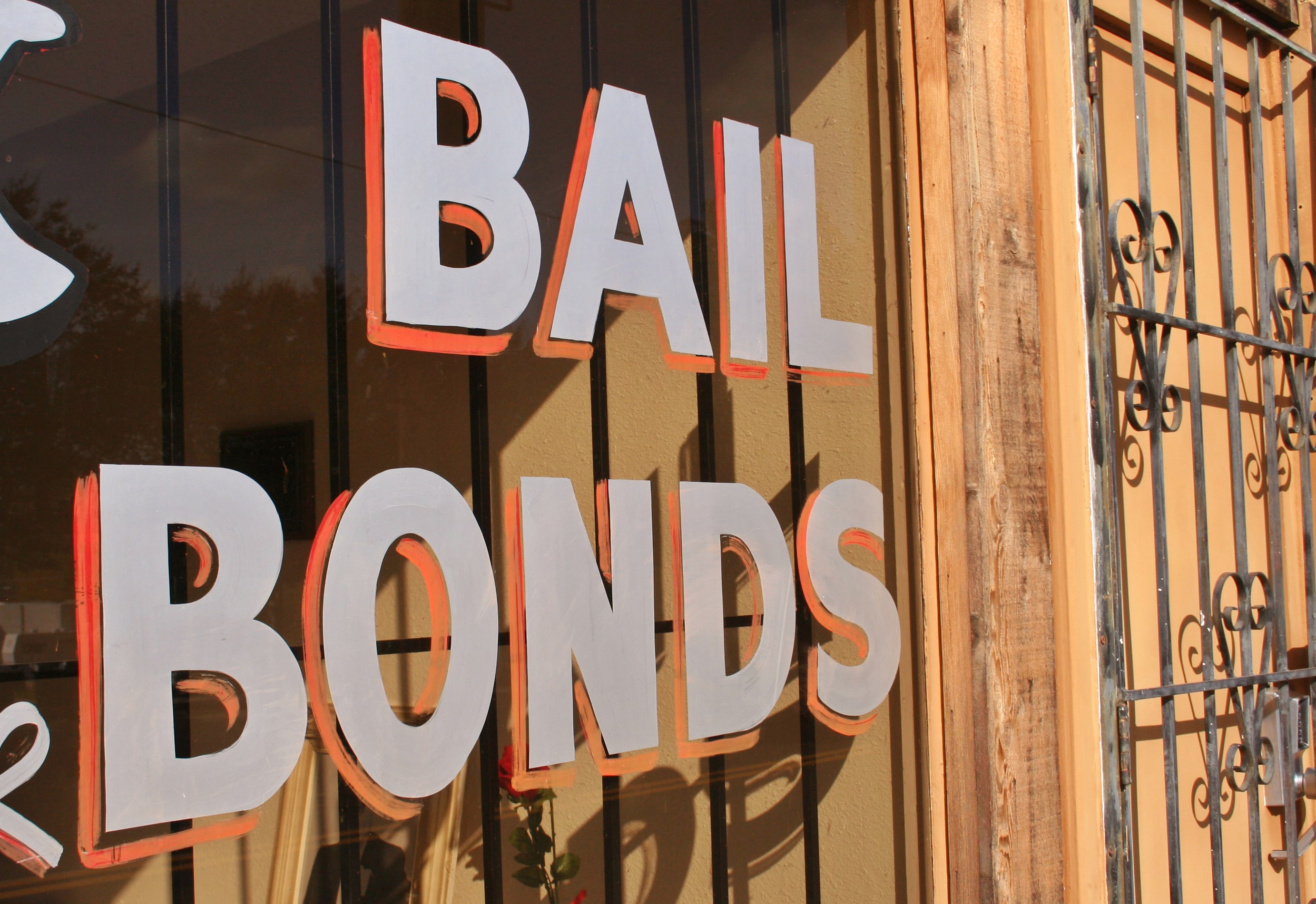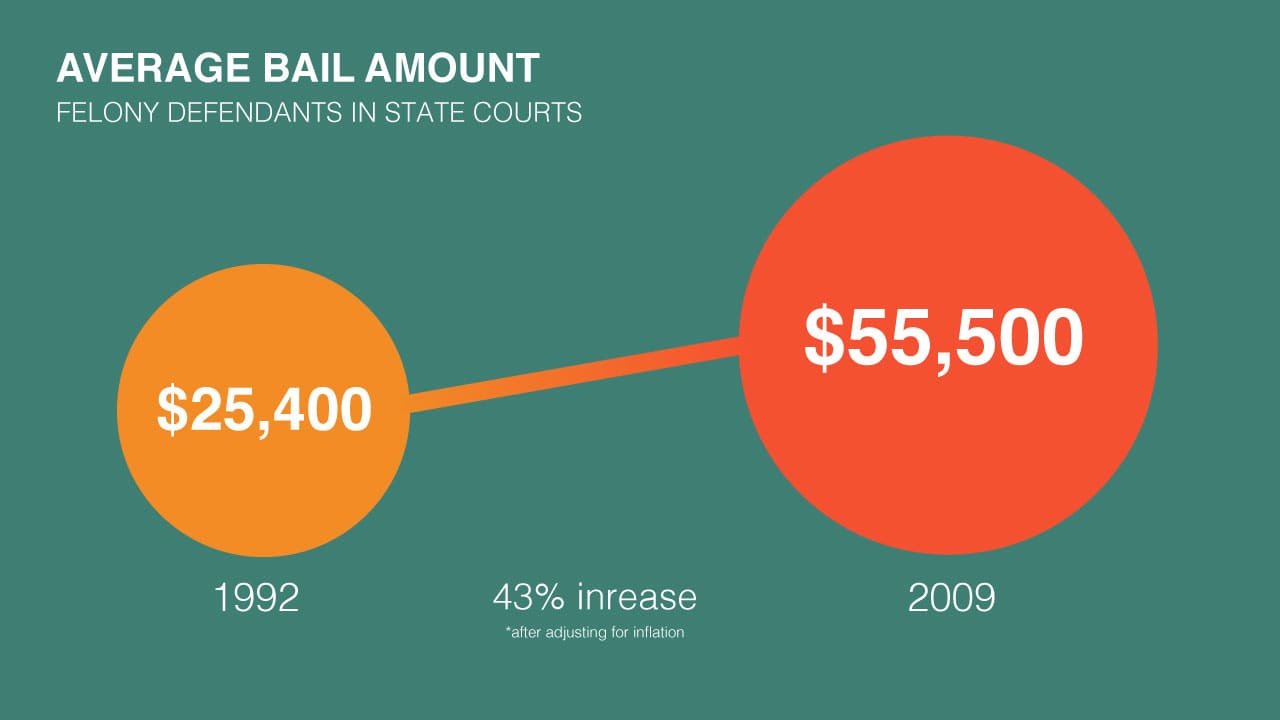The two-tiered justice system: Money bail in historical perspective
Editor’s note: The SPLC and other civil rights groups recently filed a federal lawsuit challenging the bail system in an Alabama county, claiming it violates the constitutional rights of people charged with misdemeanors or felonies because it creates a “two-tiered” system of justice based on wealth. The following piece describes an earlier movement that sought to dismantle bail systems that discriminated against the poor.
In 2015, Sandra Bland, a 28-year-old woman arrested during a routine traffic stop in Texas, allegedly committed suicide after being in jail for three days because she could not afford to pay a bondsman’s fee of $500 on her $5,000 bail. In New York City, a judge sent 16-year-old Kalief Browder to jail on Rikers Island in 2010 after he could not afford the $3,000 bond imposed for stealing a backpack. Browder’s chance to make bail was eventually revoked, and he spent three years imprisoned, two of those in solitary confinement. His charges were eventually dropped and he returned home at the age of 20, but the damage to his mental health was already done. In 2015, he committed suicide at his family’s home.
The process of setting bail – a sum determined by a judge and paid either to a court or, for a fee, guaranteed by a private bail bondsman in order to assure a defendant’s appearance at trial – is not an especially interesting one. Sometimes, bail is simply set automatically by a schedule of charges. The hearing typically last minutes, usually does not involve lawyers, and produces little courtroom drama.
On occasion, however, stories like those of Sandra Bland and Kalief Browder emerge to highlight the pernicious impact of this usually invisible component of the American criminal justice system. For every story to which we, as the public, bear witness, there are hundreds of thousands of other men and women who go unnoticed behind bars – accused but not convicted of a crime – because they cannot afford bail. On any given day, more than six in ten inmates in city and county jails are awaiting trial. For their crime of poverty, they pay in lost income, employment, and time with their families. They are more likely to plead guilty in order to avoid pretrial detention. Some, like Browder and Bland, end up paying with their health, safety, and even their lives.
The debate over how to reform the bail system is an old one, it turns out. Efforts to make bail less punishing to the poor emerged alongside the War on Poverty, but – like many of the nation’s anti-poverty initiatives – fell victim to tough-on-crime rhetoric that emerged in the mid-1960s.
The punitive nature of our bail system is rooted in history and deeply tied to central aspects of American political culture, especially our views of poverty, our assumptions about the interconnectivity of race and crime, and the financialization of our criminal justice system. Looking back offers a chance to reflect on how to reform the system moving forward.
Despite the postwar economic boom, one in five Americans at midcentury lived below the poverty line. Many of those accused of crimes found – as they do now – that bail was out of reach.
Academics were the first to expose the plight of criminally charged indigents. In a 1954 study of the Philadelphia court system, University of Pennsylvania law professor Caleb Foote found that judges were setting high bail to “break” crime waves, or to punish defendants whose charges they found particularly objectionable. Though bail was never meant to act as a tool of punishment or means of detention, Foote found that this was, in fact, the “normal magisterial practice.” Three out of four defendants charged with a serious crime could not make their bail, while more than one-quarter of those charged with lesser offenses were forced to wait behind bars for their court date. Members of minority groups often received harsher punishment. “He is a Puerto Rican. What a bum,” one judge offered as his explanation for setting a particularly high bail amount.
Children, too, received this kind of treatment. In an era when juvenile delinquency ranked among the most pressing areas of national concern, judges reportedly set high bail to give children “a taste of jail” in hopes of discouraging them from embarking on a life of crime.
The work of scholars like Foote revealed the fundamental problems of the pretrial system: that bail was set based on a defendant’s charge rather than their ability to pay. How could courts eliminate the dual system of justice, where the accused’s bank account determined their chances of pretrial freedom?
It was private philanthropists who first stepped in to try to answer that question. In 1961, Louis Schweitzer – an eccentric industrialist described as having “a love affair with the Bill of Rights” – launched the Vera Institute to bring equity to the pretrial process. The template for its bail project was fairly simple: In order to ensure than an individual defendant’s circumstances were taken into account, Vera drew on the labor of New York University law students to supply judges with information they often lacked, including the employment records and criminal histories of defendants. Based on the strength of their community ties, reformers made the case that many defendants were a low flight risk and could be released without bail. The court ordered the release of 60% of the defendants recommended by Vera, compared to only 14% of parallel cases in a control group. Of those released, 99% returned for their court date.
Vera emerged just as the nation’s political mood was shifting. The Warren Court was swiftly expanding the rights of the accused, while civil rights activists brought the interrelated problems of poverty and discrimination into the national spotlight. The project piqued the interest of Robert Kennedy, one of the era’s most prominent anti-poverty crusaders. “Only one factor determines whether a defendant stays in jail,” Kennedy told 400 law professionals at a 1964 conference jointly held by the Justice Department and the Vera Institute, “That factor is, simply, money. How much money does the defendant have?” The conference issued an endorsement of pretrial services like Vera’s, which Chief Justice Earl Warren deemed “immensely significant.” A reformist movement began making inroads around the country and, by 1965, Vera-inspired programs operated in 56 jurisdictions and statewide in New Jersey and Connecticut.
Through the strange contingencies of history, Kennedy found himself on the same side of the bail reform issue as North Carolina Senator Sam Ervin, a man who had vigorously opposed the 1964 Civil Rights Act that Kennedy championed. Ervin’s strict intentionalist interpretation of the Constitution steered his crusade against the use of excessive bail, but so did his sympathy for North Carolina moonshiners unable to pay their way out of jail. “Their only vice was makin’ moonshine likker and they felt they were doing no harm,” he is alleged to have said. Ervin introduced the 1966 Bail Reform Act, which received Kennedy and President Johnson’s enthusiastic approval. Within federal courts, money bail became a last resort, used only if no other measure could reasonably assure a defendant would appear in court.
The decreasing use of financial release – a reform that cut across all levels of the court system, if somewhat unevenly – resulted in a noteworthy drop in pretrial detention. A major, multicity study conducted by law scholar H. Wayne Thomas found that the percentage of felony defendants who remained in jail between arrest and disposition dropped by one-third between 1962 and 1971. Some cities made particularly dramatic changes. In Minneapolis, for example, pretrial detention rates fell from 54% to 13%.
Another positive change followed: Limiting the role of money in the pretrial process helped to stifle the power of the commercial bail industry, whose troublesome role in the courtroom made them a favored target for reformers. In the first half of the 20th century, grand jury and press investigations nationwide had revealed countless instances of bondsman offering kickbacks to police and judges who steered clients their way. They also exacerbated the discriminatory impact of the bail system. Under no obligation to bail out anyone they deemed a bad investment, bondsman could deny services to anyone who couldn’t afford their fees or provide assets for collateral. But as judges in some jurisdictions began releasing more defendants without financial conditions, bondsman started to go out of business. In New York City, their numbers decreased by 33% between 1964 and 1969. Once deemed the “kings of the courts,” commercial bondsmen fell on hard times.
Despite its initial success, the bail reform movement withered during the latter half of the 1960s as the War on Poverty gave way to a new offensive on crime. Linking civil rights demonstrations, student protests, and the “long, hot summers” of urban uprisings into a general pattern of lawlessness, conservative politicians argued that America was coming apart at the seams. Their calls for “law and order” were, from the start, designed to play on the racial fears of white Americans. H.R. Haldeman, President Richard Nixon’s chief strategist, bluntly laid out the program’s intent in his personal diary: “[T]he whole problem is really the blacks. The key is to devise a system that recognizes it while not appearing to.”
These widely popularized ideas about race and crime worked to eclipse the narrow reformist moment of the mid-1960s. By the end of the decade, bail reform efforts faced a profound imaging problem. The figure of the indigent defendant drawn by pretrial justice advocate like Kennedy had induced sympathy and was, crucially – as in San Ervin’s North Carolina moonshiner example – white, or, at the very least, racially unmarked. By the time Nixon took office, that image was replaced by a new one: the racially coded, repeat criminal offender.
With little evidence, politicians and law enforcement officials claimed the 1966 Bail Reform Act was responsible for turning these criminals loose on the streets. “The defendant gets the benefit of the doubt; the community gets the benefit of his switchblade,” the popular conservative commentator James Kilpatrick wrote. Seizing on the public’s growing fears, conservatives offered a set of policies designed to clamp down on street crime through prison expansion, block grants that boosted the capacity of local police departments, and tougher bail procedures. Collectively, these policies aimed to incapacitate those Nixon deemed “dangerous hard-core recidivists,” who were “being arrested two, three, even seven times for new offenses while awaiting trial.”
Nothing exemplified the punitive turn in American policy like Nixon’s District of Columbia Court Reorganization Act of 1970. In addition to mandatory minimum sentences for repeat offenders and “no-knock” raids, the Act authorized the use of preventative detention. The first of its kind anywhere in the country, the measure gave judges permission to incarcerate individuals before their trial by denying them bail altogether. Proponents reasoned that the measure would halt the so-called “revolving door” justice system. As the conservative National Review explained, preventative detention “would help especially in narcotics cases, in which the habit may cost the accused from $15 to $100 a day – thereby requiring him to continue mugging or stealing or whatever.”
The D.C. law’s preventative detention procedure was bureaucratically clunky and, in reality, rarely used. While it achieved little in the way of meaningful policy changes, its political impact was immense. The measure changed the conversation surrounding bail by reframing the issue in terms of public safety rather than the civil liberties of the accused. It was a sharp turn away from the philosophy that underpinned the 1966 Bail Reform Act, leading many bail reformers to mark the bill’s passage as the death knell of their movement.
By the time President Gerald Ford took office in 1974, War on Crime crusaders had adopted the “career criminal” – an early invocation of the mythical juvenile “superpredator” – as their primary foe. Both politicians and social scientists argued for new prosecutorial measures to contend with an alleged subset of young, chronic offenders who committed crime chiefly for the thrill. To this end, Ford authorized a special $330 million Career Criminal Program to “incapacitate” the offender, both “pretrial, through high bail recommendations, and post-conviction, through the recommendation of maximum sentences.” As historian Elizabeth Hinton documents in her book From the War on Poverty to the War on Crime: The Making of Mass Incarceration in America, though Ford and his staffers painted the career criminal as ruthless and pathological, the “typical defendant selected for the special prosecution tended to be a single, unemployed black man under the age of twenty-four – with limited opportunities in the formal employment sector who had appeared to make crime into a career.”
Bail wasn’t increasing only in select crime-fighting programs. Across the country, judges began raising bail rates that appeared on predetermined court schedules. Essentially, schedules turned bail into a fee correlated with the defendant’s charge, and obviated the need for individualized assessments. They provided a shortcut for overburdened courts but hurt indigent defendants by failing to take economic resources into account.
Changes made in Cincinnati in 1972 were typical. In that Rust Belt city, where rates had been lowered only eight months before “to remove penalties against poor persons,” judges voted to substantially increase the bail amount that appeared on the city’s schedule. For robbery, they raised the rate from $25 to $1,000 and, for the crime of pandering, from $10 to $500. The prevalence of these schedules – and the move to indiscriminately and significantly apply rate increases – demonstrated a widespread failure to establish pretrial programs like the one Vera implemented only a decade earlier.
The lack of political will – and, crucially, funding – necessary to implement pretrial services in local court systems was dually embedded in the growing focus on crime control as well as newly popularized ideas about the nature of poverty itself. Unlike the heyday of the War on Poverty, by the latter half of the 1960s the notion that poverty was the result of economic deprivation and racial disadvantage was overturned by the argument that poverty was, more simply, a product of culture. Causation was reversed: social scientists and politicians – liberal and conservative alike – insisted that societal problems like crime, breakdowns in family structure, and unemployment were, in fact, themselves causing poverty. President Johnson’s adviser Daniel Patrick Moynihan famously propagated this idea in a memo referring to lower-class black culture as a “tangle of pathology.” Though Moynihan himself insisted that large-scale employment programs offered a remedy, it was his indictment of the black poor that stuck in the mind of the public.
The Harvard political scientist Edward Banfield epitomized the poverty-as-pathology perspective. In a 1968 article, Banfield argued that, because disorder was bred by lower-class culture – in his mind, an inescapable part of urban life – the government was incapable of producing solutions to “end chronic poverty, stop crime and delinquency, or prevent riots.” If the poor’s propensity to commit crimes was inevitable, shouldn’t public policy be oriented toward monitoring and containing criminals and potential criminals? In this ideological framework, dedicating resources to jailing pretrial detainees appeared more logical than supporting pretrial services, which seemed designed only to allow crime to thrive. That was precisely the thinking that won out: By 2002, less than 10% of U.S. jurisdictions operated risk assessment tools like the Vera program.
Perhaps nowhere was the punitive criminal justice impulse more apparent than in the War on Drugs declared under President Ronald Reagan, whose electoral victory in 1980 served as the culmination of a conservative ascendancy built on law-and-order rhetoric. Reagan’s “new legislative offensive” combined reforms in “bail, sentencing, criminal forfeiture, and exclusionary rule and labor racketeering” to crack down on drug use and urban disorder. Ostensibly colorblind, Reagan’s efforts targeted marginalized black neighborhoods just as unemployment in these communities was growing in proportion to the sharp decline in urban manufacturing jobs. In other words, these developments converged to maximally impact minorities and the poor.
Within the court system, the drug war’s disparate treatment began even before a defendant was sentenced. In the mid-1980s, bail schedules underwent a new round of revisions – this time upping the bail amount attached to drug offenses. Judges in circuit courts in Florida – which, situated at the epicenter of the drug war, tended to address drug crimes with an especially heavy hand – raised bail as much as tenfold for drug-related crimes. In the Ninth Judicial Circuit, for instance, bail for felony possession for cocaine and marijuana climbed from $1,000 to $10,000 in 1986. “If it keeps an alleged offender off the street for a day longer,” a police lieutenant in Seminole County told the Orlando Sentinel after his jurisdiction imposed a new schedule, “it will help us and the community.”
From arrest to conviction, the judicial system hit African Americans particularly hard, but nothing epitomized the unequal impact quite like the 100-to-1 sentencing disparity between crack cocaine and powder cocaine-related offenses enshrined in the 1986 Anti-Drug Abuse Act (as well as slightly smaller distinctions in the criminal codes of 13 states). The drugs are nearly chemically identical, but crack was cheaper and had a much higher rate of use among African Americans. The result was an enormous increase in the average federal drug sentencing length for African Americans as compared to whites. But the distinction could also apply to bail. In 1986, a judge in Florida’s Fifth Judicial Circuit increased bail for possession or sale of crack from $2,000 and $5,000, respectively, to $20,000 – meaning that bail for a defendant with a crack charge could be twice as high as that for other drug-related offenses, leaving more of these defendants detained before their trials.
Bail schedules were usually not binding, and judges could raise or lower bail as they saw fit. It’s crucial to note that judges are, just like anyone else, subject to their political moment. In the tough-on-crime era there was little to be gained from going easy on defendants but a great deal to be lost if someone free on bail went on to commit a new crime. Just as the story of Willie Horton, temporarily released from prison through a furlough program supported by Michael Dukakis, wounded the Massachusetts governor’s chances at the presidency, defendants who committed crimes while out on bail could result in bad press and backlash for judges. From their view on the bench, being highly punitive at the pretrial stage appeared a safer bet.
In the 1980s, bail laws themselves underwent a profound change. Legislators were eager to implement newly punitive measures as soon as Reagan took office. In fact, according to an analysis by the law scholar Steven Wisotsky, most of the more than 100 bills introduced to reform the criminal justice system during the first year of the 97th Congress created restrictions on bail and were explicitly tied to drug offenses. Some of the proposed legislation would allow judges to consider past drug use when making release decisions, while other bills set bail at the value of the narcotics involved in a drug crime or denied bail entirely to those convicted under the Comprehensive Drug Abuse Prevention and Control Act.
Legislative action on bail came first from the states. These measures were explicitly predictive, allowing judges to make pretrial decisions based on the perceived “dangerousness” of a defendant – a notion that was vaguely defined and thus could be applied widely at the judge’s discretion. They also covered a wide range of pretrial considerations, including the conditions of release and the determination of a bail amount. Delaware’s bail statute, for example, required judges to set “such bail as reasonably will assure … the safety of the community.” A Florida law instructed judges to make “the protection of the community from risk of physical harm to persons … the primary consideration” of bail.
By 1984, 34 states had adopted bail laws that incorporated dangerousness into their list of considerations. The same year, Congress passed an updated Bail Reform Act, authorizing preventative detention within the federal system and fulfilling a long-held goal of tough-on-crime politicians.
In effect, the War on Drugs and the new danger-oriented bail laws shifted judicial decisions toward more punitive ends. A drug charge could reasonably be used as evidence of a defendant’s “dangerousness” and propensity to commit another crime, thereby justifying a higher bail amount. To compound the impact of these developments, a record number of drug offenders were filing before judges thanks to new drug laws and harsher policing carried out under the Reagan administration and expanded under Presidents Bush and Clinton. As a result, fewer defendants were released on their own recognizance. Between 1990 and 1998, non-financial releases for defendants in state courts dropped from 40% to 28%. And if “dangerousness” appeared an ill-defined concept, recent statistical analysis offers a glimpse into who earned the label in practice. According to one study of a northern U.S. jurisdiction, bail amounts assigned to young black men were $3,500 higher than those set for other defendants. By the time they reach sentencing, 67.7% of black defendants charged with drug crimes in U.S. District Courts remain in custody compared to 44.3% of white defendants.
In recent decades, criminal justice has turned into a money-making industry. As Marie Gottschalk has written in Caught, her masterful book on the American prison state, “The punitive turn was at the start primarily a political project, not an economic one,” nevertheless, it “created powerful economic actors with close ties to the political sector who are deeply vested today in the carceral state.” With more defendants assigned financial conditions of release, the state handed the private bail industry an incredibly lucrative comeback opportunity. By the 1990s – when the use of commercial surety bonds surpassed release on recognizance as the most common type of pretrial release in state courts – the industry was able to consolidate its power, forming the American Bail Coalition (ABC) in 1992. The bail bond industry now drains an estimated $2 billion a year from mostly low-income defendants and their families, and then spends millions of dollars of this revenue perpetuating its own predatory existence through lobbying to curry favor with politicians and pass friendly legislation.
Thanks in no small part to the efforts of the private bail industry, between ABC’s formation and 2009 the average bail amount for felony defendants in state courts rose from $25,400 to $55,500 – an approximately 43% increase after adjusting for inflation. The industry has also created an even more pernicious pretrial system for low-income defendants to navigate, locking clients into predatory contracts with additional fines and fees and leaving already-vulnerable people with mounting debt as part of a new “user funded” justice system. With the ability to revoke a defendant’s bond on a whim, bondsmen have an unbelievable ability to manipulate clients – scores of news reports, for example, show women are especially susceptible to sexual coercion at the hands of bail agents.
How, then, to move forward? Models that effectively remove money from the pretrial process are proliferating across the country. This year, New Jersey implemented a risk assessment tool judges use to determine whether to release or detain a defendant before their trial, assigning money bail only in extremely exceptional cases. A similar system operates in the nation’s capital, where a mere 4% of people have financial conditions attached to their release and roughly 88% are freed with no monetary obligations. Of those released, 90% made all scheduled court appearances and 98% were not rearrested for a violent crime. A well-funded pretrial agency, which monitors defendants and reminds them of upcoming court dates, helps this system function smoothly, as does the robust public defender program that supplies representation for indigent defendants during pretrial hearings. Effectually changing the criminal justice system requires systemic rather the piecemeal reforms.
Progress has also come from litigation. After an Alabama judge issued an opinion condemning the state’s practice of jailing defendants because of their inability to make bail, the Southern Poverty Law Center and the Civil Rights Corps worked with the state’s 75 largest municipal courts to end bail practices in misdemeanor cases that unfairly punish the poor. Pretrial detention declined dramatically as a result. In the city of Hoover, for example, the population of municipal court defendants in the jail has fallen by 90%. Similar cases have achieved success around the country. The SPLC is currently pursuing a suit in Randolph County, Alabama, that challenges the money bail system for both misdemeanors and felonies, one of the first cases of its kind. Change is coming from the grassroots, too. On Mother’s Day, a coalition of 25 groups around the country bailed out more than 100 black mothers through their Mama’s Bail Out Day campaign.
Collectively, these reforms are shifting courts away from reliance on a discriminatory money-based system. Decades of tough-on-crime policies that criminalized the poor and people of color are yet to be undone, but the pendulum is beginning to swing.
Cassie Miller, Ph.D., is a former Mellon/ACLS Public Fellow at the SPLC.

